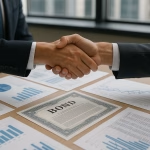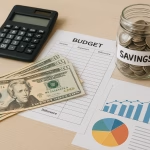Selecting the right commercial health insurance plan hinges on striking a balance between cost, coverage, and convenience. By focusing on simple terms, short sentences, and a friendly tone, you can easily find a plan that fits your needs and budget.
What Is Commercial Health Insurance?
Commercial health insurance is a plan you buy from a private company. It helps cover the costs of doctor visits, hospital stays, and other medical expenses. Think of it as a safety net that keeps you and your family healthy and financially secure. If you don’t have insurance, a single trip to the hospital can cost thousands of dollars. With commercial health insurance, you pay a set fee each month, and the insurer covers most of the rest when you get care.
Most plans cover regular check-ups, shots, and tests to catch problems early. They also cover serious events, like surgeries or emergency room visits. Some plans even include extra perks, such as telehealth visits or wellness programs to help you stay healthy.
Why Commercial Health Insurance Matters
Having commercial health insurance brings three significant benefits:
- Peace of Mind: You know you can afford care when you need it.
- Better Health: You use preventive services more often.
- Financial Safety: You avoid large, unexpected bills.
Studies show that insured individuals receive more screenings for conditions such as cholesterol and cancer. Early detection saves money and lives. Without insurance, people often skip care or wait until a problem gets worse, which can be costly in the long run.
Types of Commercial Health Insurance
Commercial health insurance has several forms. Each one works a bit differently. Reviewing them helps you pick the plan that fits your life and wallet.
Health Maintenance Organisations (HMOs)
HMOs focus on managing costs. Here’s how they work:
- You choose a primary care doctor (PCP).
- You must use doctors and hospitals in the HMO network.
- You need referrals from your PCP to see a specialist.
- Costs are low, with fixed copays for visits.
HMOs are popular because they keep costs predictable. You pay a single fee for each visit, such as $20, to see your doctor. Preventive care, such as vaccines and annual check-ups, often has no out-of-pocket cost. The trade-off is less freedom—you stay inside the network and follow the PCP’s lead.
Preferred Provider Organisations (PPOs)
PPOs give you more freedom but cost more:
- You can see any doctor you like.
- You save on costs when you use in-network providers.
- You don’t need referrals for specialists.
- You pay more if you go out-of-network.
PPOs suit people who want choice. You may prefer a specialist who is not in your network. PPO plans let you see them, but you pay a higher share. If you travel or want flexibility, a PPO may be worth the extra cost.
Point-of-Service (POS) Plans
POS plans blend HMO and PPO features:
- You pick a PCP for referrals.
- You stay in the network for the best price.
- You can go out-of-network, which may result in higher costs.
- You need referrals to see specialists.
POS plans can suit families. You get cost savings of an HMO but can seek care outside the network when needed. The key is understanding how much you pay for out-of-network care.
High-Deductible Health Plans (HDHPs) with HSAs
HDHPs pair with Health Savings Accounts (HSAs):
- You pay higher deductibles before insurance starts.
- You save tax-free money in an HSA for medical costs.
- Contributions to HSAs lower your taxable income.
- Many employers contribute to your HSA.
HDHPs are suitable for healthy individuals who want lower premiums. You pay less each month but more out of pocket if you need care. The HSA helps you save for future needs, and unused funds roll over year to year.
Key Cost Terms Explained
Understanding the cost terms in your plan helps you plan and compare:
- Premium:
The monthly fee you pay to keep insurance active. Lower premiums usually mean higher out-of-pocket costs later.
- Deductible:
The amount you pay out of pocket before insurance starts covering services. High-deductible plans have lower premiums. Low-deductible plans have higher premiums.
- Copay:
A fixed fee per visit or service, like $20 to see your doctor.
- Coinsurance:
A share of costs after you hit the deductible. For example, you pay 20% of a $100 bill, and insurance pays 80%.
- Out-of-Pocket Maximum:
The most you ever pay in a year. Once you reach it, insurance covers 100% of covered services.
Checking all these terms together—premium, deductible, copay, coinsurance, and out-of-pocket max—gives you the total cost picture.
Commercial Insurance vs. Government Plans
Commercial health insurance differs from public programs:
- Medicare: For people 65+ or with disabilities.
- Medicaid: For low-income individuals and families.
- Commercial: Plans you buy yourself, not government-funded.
Commercial plans must follow special rules, like covering pre-existing conditions at standard rates. You have choices in benefits and networks that public programs may not offer.
How to Enrol in Commercial Health Insurance
Open Enrollment
- Happens once a year.
- You choose or change plans for the coming year.
- Miss this window, and you’ll have to wait until next year.
Special Enrollment
- You get 60 days after life events, such as:
- Marriage.
- Birth of a child.
- Losing other coverage.
If you move or lose job-based insurance, special enrollment lets you sign up without waiting for open enrollment.
Required Documents
- Photo ID.
- Proof of income (pay stubs or tax returns).
- Proof of residence (utility bill or lease).
Selecting the Right Plan
To choose wisely, follow these steps:
- List Your Needs:
- Regular prescriptions?
- Frequent doctor visits?
- Preferred specialists?
- Check Network Providers:
Ensure that your doctors and hospitals are part of the network.
- Compare Total Costs:
Sum premiums, deductibles, copays, and coinsurance.
Use plan brochures or online calculators.
- Review Benefits:
Look for extras, such as telehealth, mental health services, and gym memberships.
- Read Member Reviews:
Search forums for feedback on customer service and claims.
- Plan for the Future:
If you plan to start a family or expect a surgery, ensure your plan fits.
Real-Life Examples
Anna’s HMO Success
Anna chose an HMO with low premiums and $0 preventive care. She visits her PCP every year, gets free check-ups, and pays only $15 per specialist visit. She saves over $200 a month and stays healthy with regular screenings.
Ben’s PPO Freedom
Ben travels frequently and prefers to see his cardiologist out of state. He pays more in premiums but sees his favourite doctor whenever he needs to. He covers most costs in-network and pays a small extra fee when out-of-network.
The Smith Family’s POS Choice
The Smiths needed flexibility and cost savings. They use in-network paediatricians and specialists with low copays. When they vacation, they see out-of-network doctors and pay higher fees, but they know they can get care anywhere.
Improving Your Health Journey
- Use Telehealth: Save time and money with online visits.
- Join Wellness Programs: Many plans offer rewards for healthy habits.
- Stay Informed: Read your plan materials annually to stay up-to-date on new benefits.
- Ask Questions: If the terms confuse you, call customer service.
Final Thoughts
Shopping for health insurance can feel overwhelming. By using simple terms, short sentences, and a friendly tone, the process becomes manageable. Compare the costs and coverage, check networks, and plan for your health needs. With clear information and thoughtful choices, you can secure the right commercial health insurance plan for you and your family—ensuring peace of mind and a healthier future.
Common FAQs
Can I change plans mid-year?
Only during open or special enrollment. You need a qualifying event, like marriage or job loss.
Are pre-existing conditions covered?
Yes. Commercial plans must cover them at the same rate as other conditions.
What if I miss payments?
You may lose coverage. Most insurers give a short grace period but cancel after that.
How do prescriptions work?
Each plan has a drug formulary. Tier 1 drugs are less expensive, while higher tiers are more expensive. Check which tier your meds are in.





